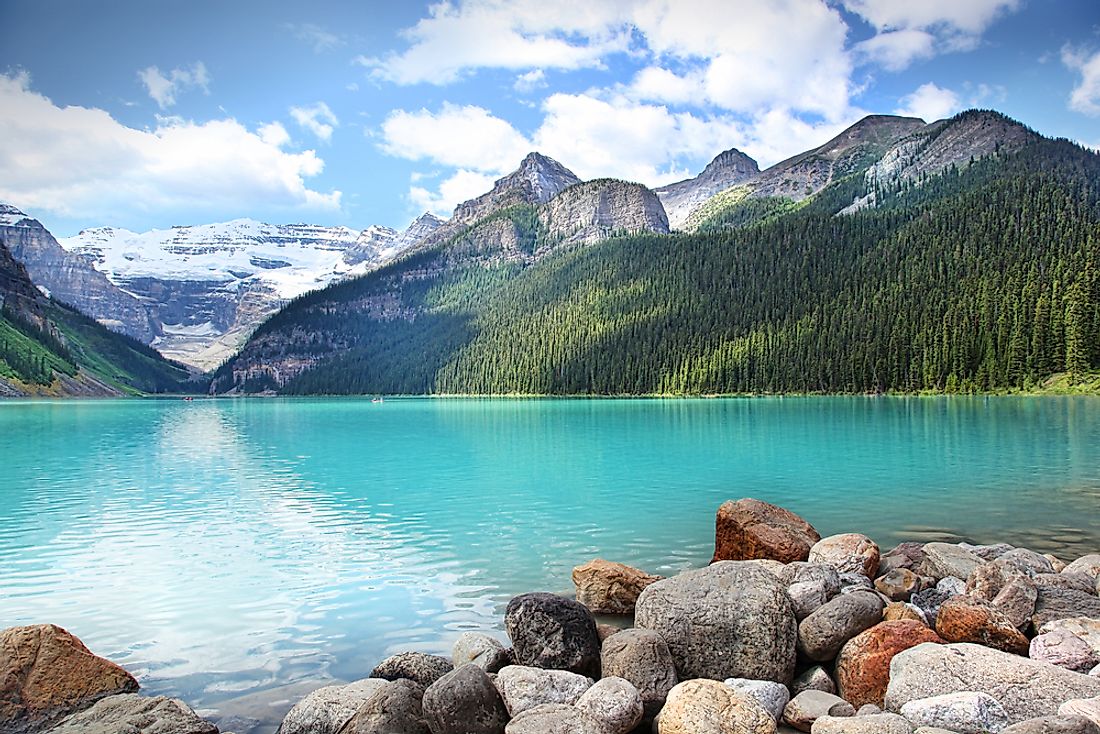Why Are Glacial Lakes Blue?

Glacial lakes are formed by melted glaciers. As the glacier moves, it erodes the land, creating a hole or space. The glacier then melts and fill the hole to form a lake. The eroding action of the glacier pulverizes the minerals on the rock over which it passes. The minerals form the sediments at the bottom of the lake. Numerous glacial lakes appear bright turquoise as if someone is continuously pouring food coloring agents into them. Sometimes, the lakes are so luminescent as if they are under-lit. Some people actually believe that every year the lakes are emptied then the bottom painted blue while others believe that a dye is often poured into the lake. However, some glacier lakes are naturally blue or turquoise. Examples of the blue glacial lakes include Lake Louise, Peyto Lake, Moraine Lake, and Bow Lake.
Formation of Glacial Lakes
The blue color seen on most glacial lakes result from the lake formation process. Glacial lakes are formed through the process of glacial erosion. As the glacier moves on the ground, it erodes the land beneath. The continuous erosion leads to the formation of spaces or large holes. The melting water from the glacier slowly fill the holes or spaces that had been formed by the moving glacier to form a lake. As the glacier moves, it also pulverizes the minerals on the rock over which it moves. The pulverized minerals settle at the bottom of the lake as sediments. Some of these sediments (also known as rock flour) are suspended in the water column.
Effects of Sediments on Lake Color
Although some people have suggested that the turquoise color of the glacial lake is as a result of the reflection of the blue of the sky by the water surface, this is not accurate. Sediments or rock flour are responsible for the blue color seen on most glacial lakes. Rock flour is very light. They are often suspended in water column most of the time and support the most population of algae, making the water to appear green. However, algae are not responsible for the blue color of the lakes. When sunlight reflects on the rock flour that is suspended on the water column, the spectacular blue color is formed on the glacial lakes, the lakes are visible from aerial photos. Lakes with smallest rock flour particles display brilliant blue color than lakes with larger rock flour suspension because of the amount of the difference in the amount of light reflected.
Best Time to View the Blue Glacial Lake
The concentration of the blue color of a glacial lake depends on the amount of rock flour suspended on the water column and the angle that the sun is shining. To see a more intense blue as possible, one needs to look at a glacial lake from a plane when the sun is at its highest and the sky is clear of any cloud. Rock flour should also be at maximum concentration. Sometimes several layers of different colors can be seen in a glacial lake, especially when rainwater finds its way into the lake. The rainwater changes the concentration of the glacial flour and the distribution of grain sizes.







